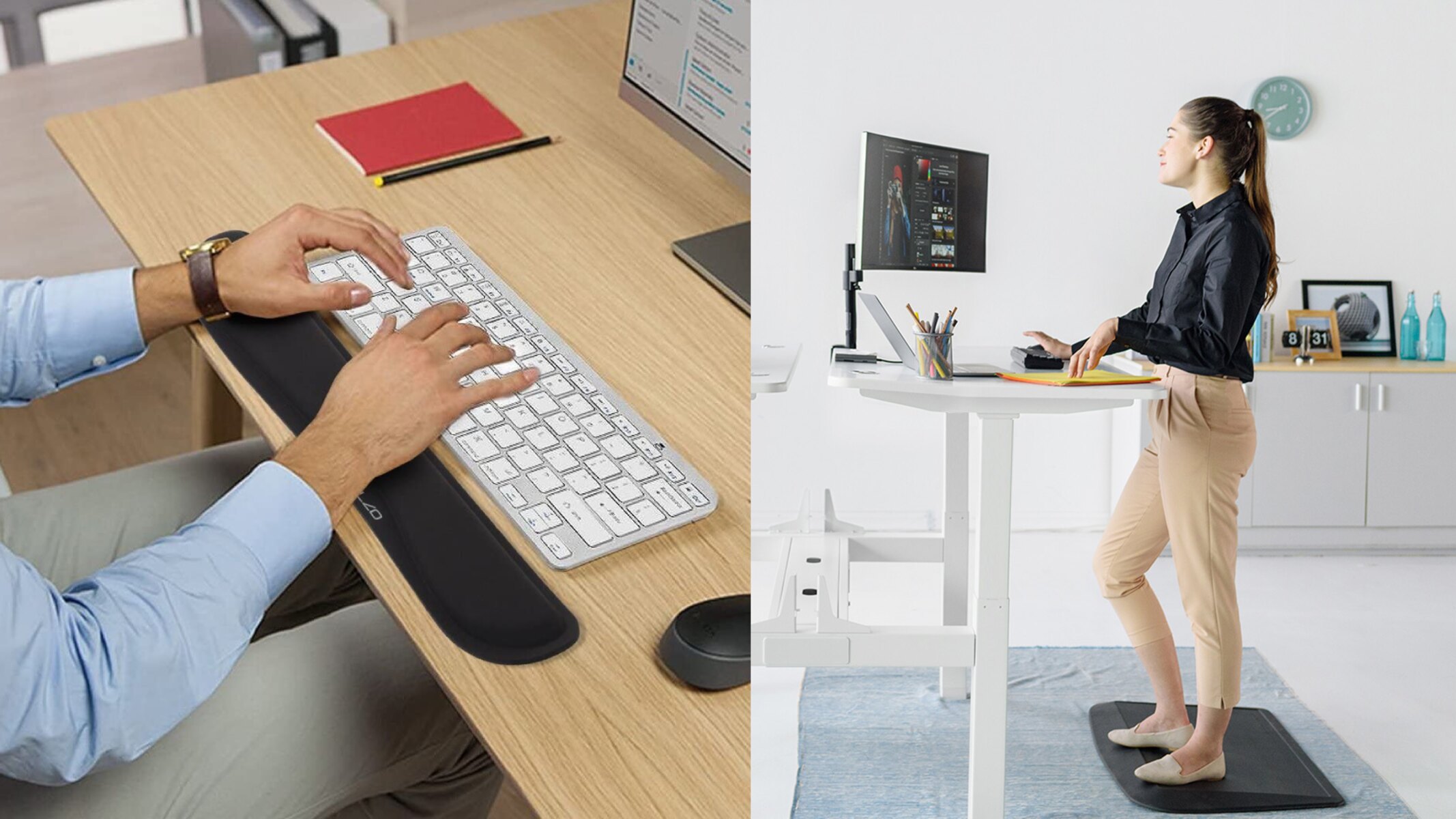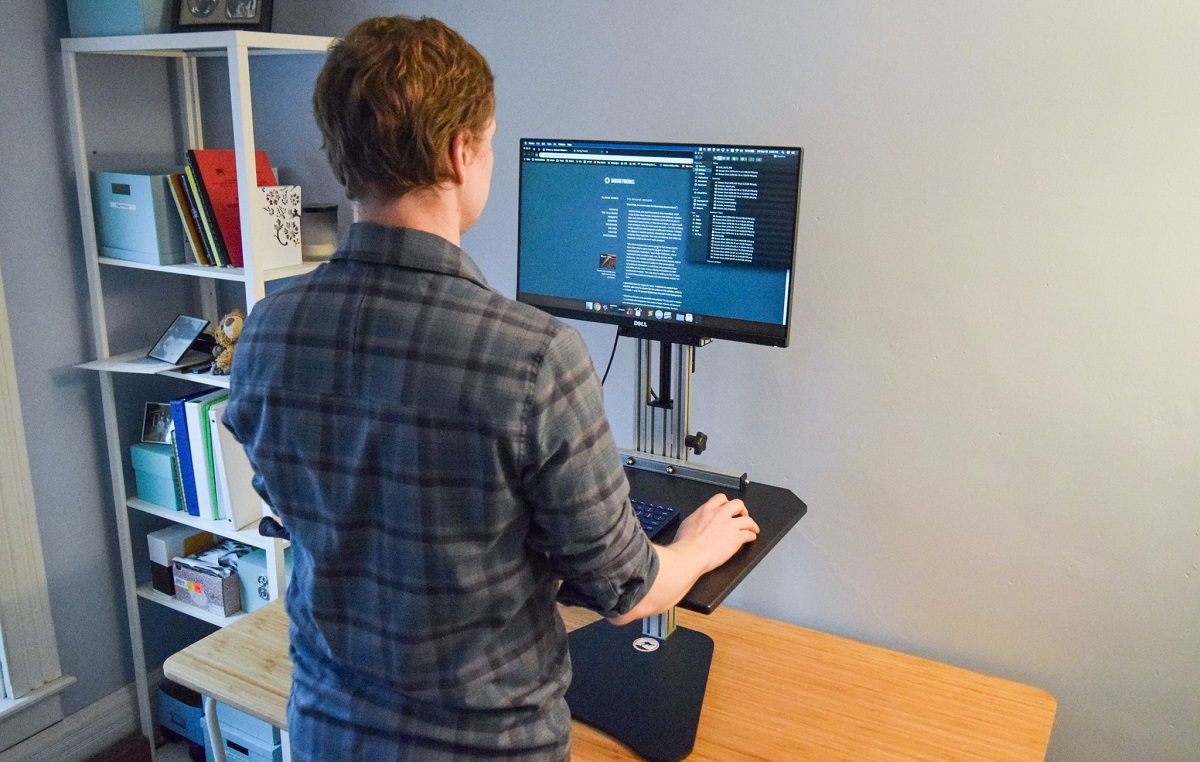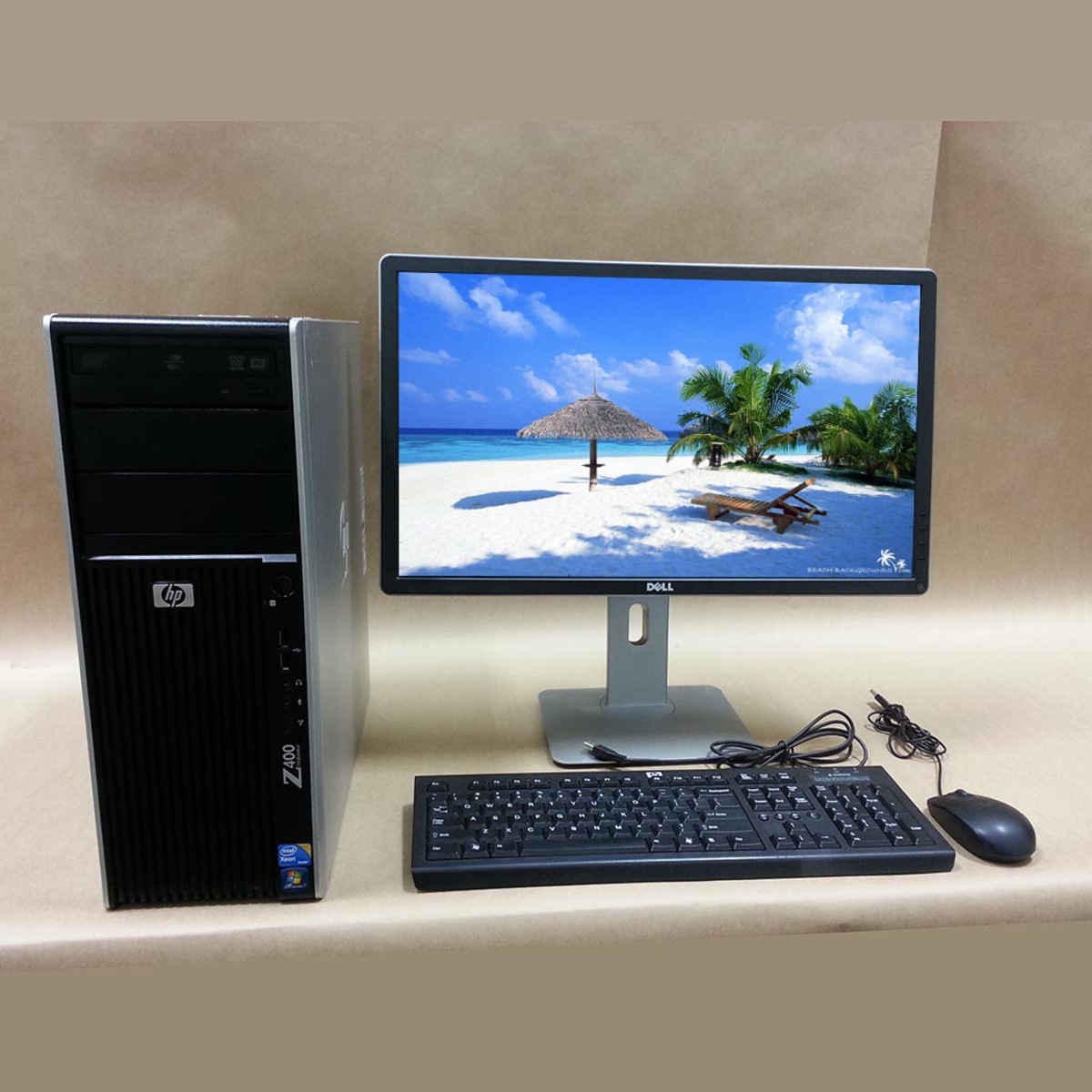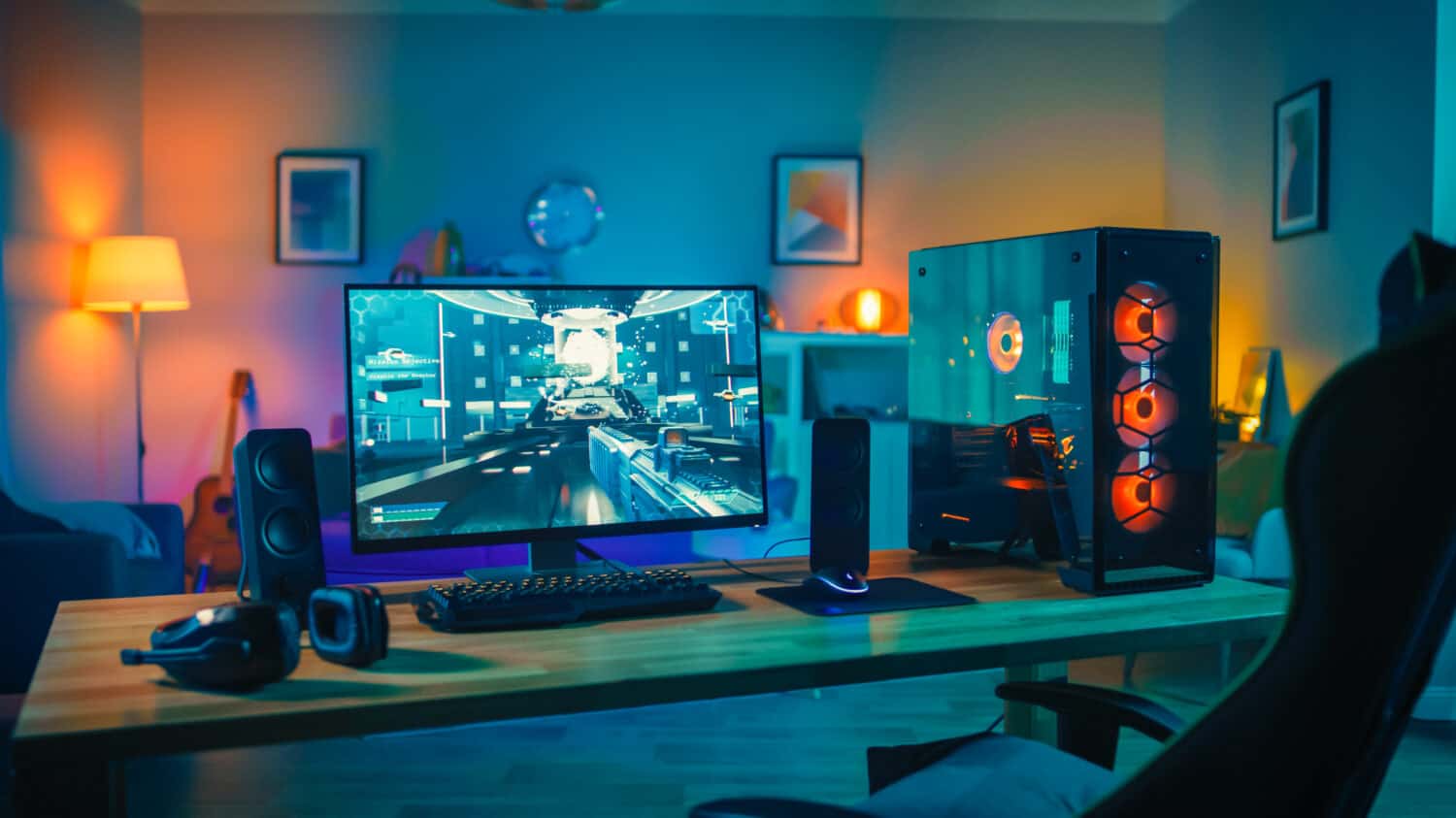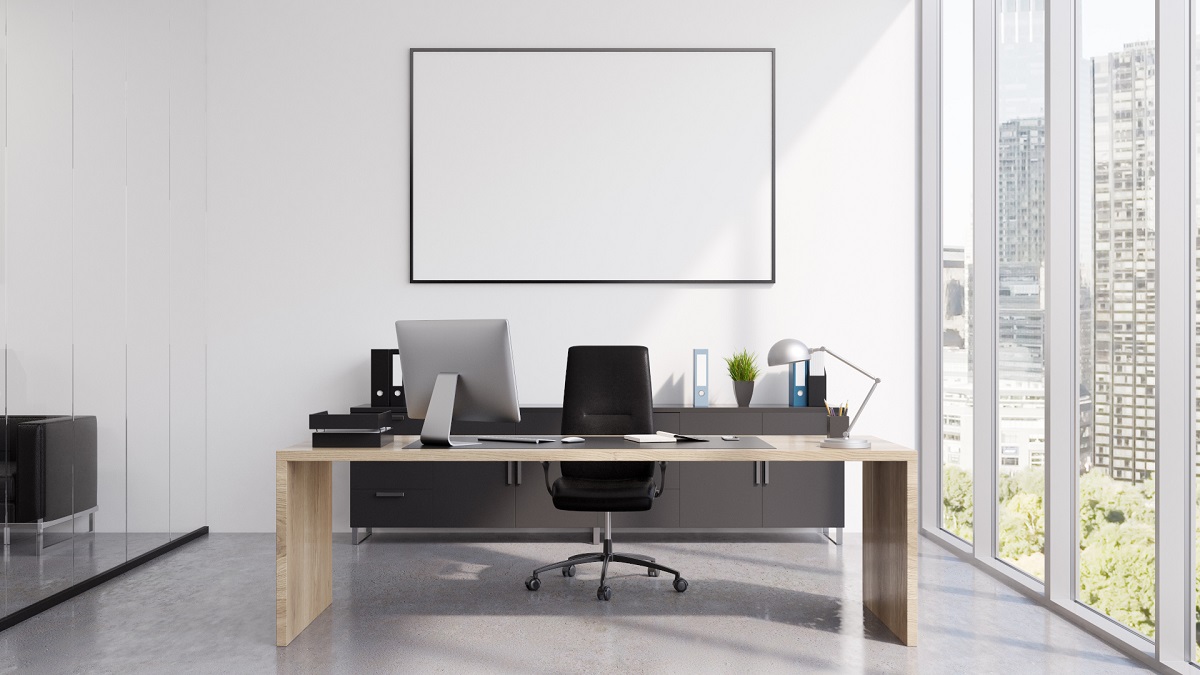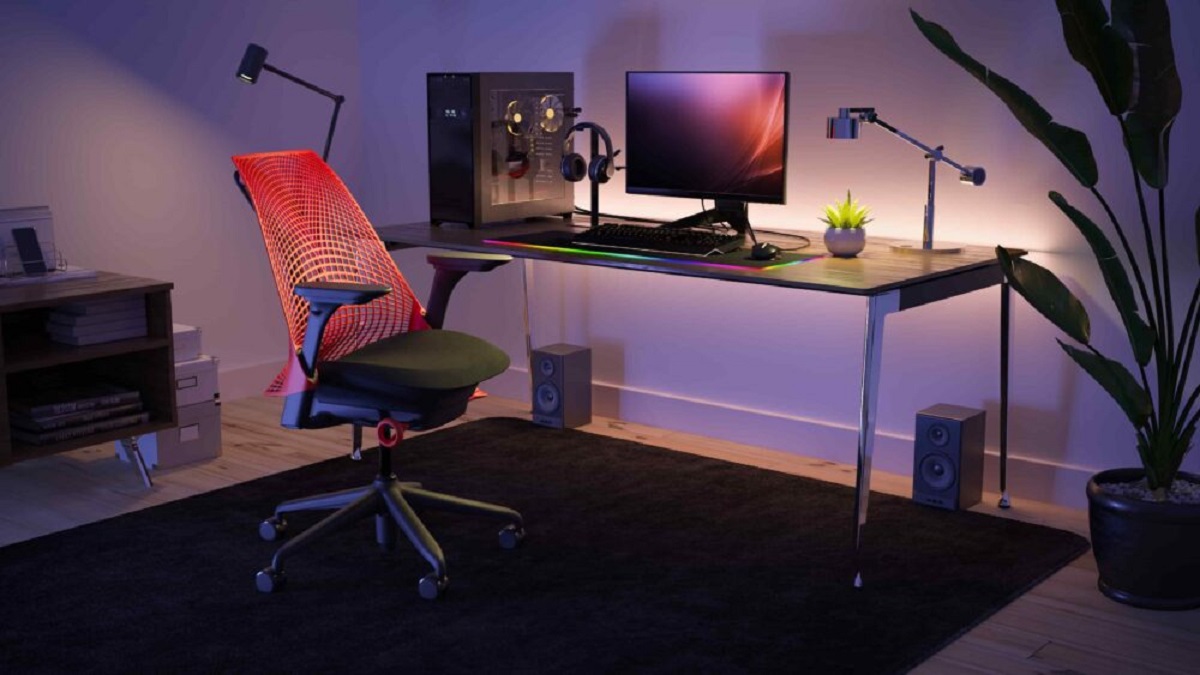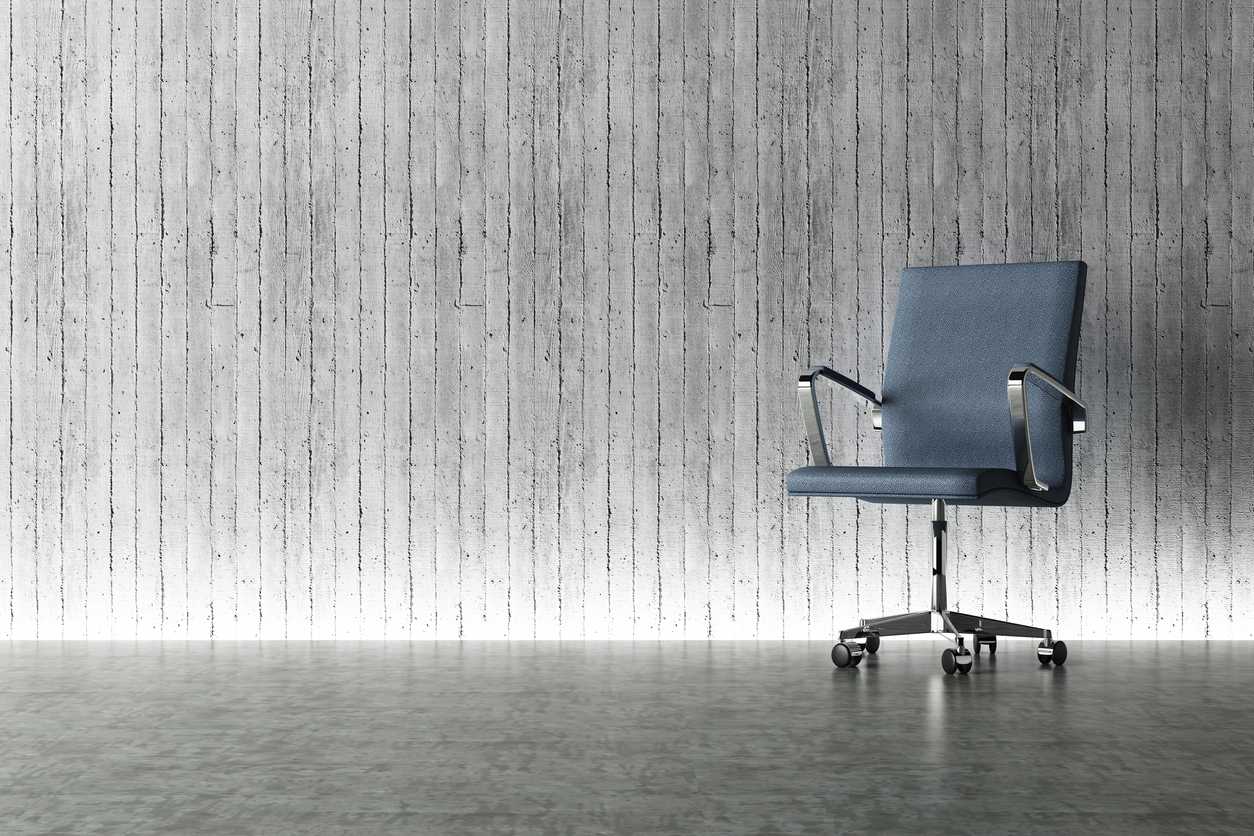Introduction
Welcome to the world of remote work, where the comfort and functionality of your workstation can significantly impact your productivity and well-being. Whether you’re a freelancer, a remote employee, or simply someone who spends a lot of time working from home, setting up an ergonomic workstation is crucial for maintaining good posture and reducing the risk of musculoskeletal disorders.
An ergonomic workstation is designed to support your body in a neutral position while minimizing strain and stress on your muscles and joints. It involves choosing the right desk and chair, positioning your monitor at eye level, adjusting your keyboard and mouse for optimal reach, maintaining good posture, ensuring proper lighting, and organizing your workspace for efficiency. By following these guidelines and taking regular breaks, you can create a workspace that promotes comfort, productivity, and long-term health.
In this article, we will explore nine essential steps to set up an ergonomic workstation that will enhance your work experience and help you avoid common physical issues associated with long hours of desk work. From choosing the right desk and chair to stretching and exercising, we’ll cover all the necessary aspects to create a comfortable and supportive work environment.
So, if you’re ready to transform your workspace into an ergonomic haven, let’s dive into the details of each step and discover how small changes can make a big difference in your productivity and overall well-being.
Choosing the Right Desk
Your desk is the foundation of your workstation, and choosing the right one is essential for creating an ergonomic setup. Here are some key factors to consider when selecting a desk that promotes comfort and efficiency.
Size and Height: Opt for a desk that provides ample space for your work activities. It should be wide enough to accommodate your computer, documents, and other essential items without feeling cramped. Additionally, pay attention to the height of the desk. Ideally, it should be adjustable so you can find a comfortable working level that allows your arms to rest at a 90-degree angle while typing.
Ergonomic Shape: Look for desks with rounded corners or contoured edges to minimize the risk of injury from sharp edges. A curved or ergonomic shape can also provide better accessibility to your work materials, reducing strain on your arms and back.
Sturdiness: Ensure that the desk is sturdy and capable of supporting the weight of your equipment and any additional items you may have. A wobbly desk not only compromises your stability but can also lead to distractions and potential accidents.
Storage Options: Consider your storage needs and choose a desk with enough drawers or shelves to keep your work area organized and clutter-free. Having easy access to your frequently used items can improve efficiency and reduce the need for excessive reaching or stretching.
Material and Style: While aesthetics may not be the primary concern for an ergonomic setup, selecting a desk that blends well with your overall workspace can still contribute to a pleasing and motivating environment. Choose a material that is durable and easy to clean, such as wood, laminate, or metal.
By carefully considering these factors, you can find a desk that suits your body, work style, and personal preferences. Remember, an ergonomic desk should provide a comfortable and functional workspace that supports your productivity and well-being throughout the day.
Selecting the Proper Chair
Choosing the right chair is crucial for maintaining good posture and preventing back pain during long hours of sitting. Here are some important considerations to keep in mind when selecting a chair that provides proper support and comfort.
Ergonomic Design: Look for chairs specifically designed for ergonomic support. These chairs often have adjustable features, such as backrest height and tilt, lumbar support, and seat depth adjustment. The ergonomic design helps to align your body in a natural and comfortable position, reducing strain on your spine and muscles.
Adjustability: Opt for a chair that offers a wide range of adjustability options. This includes height adjustment, armrest height and width adjustment, and seat tilt adjustment. Being able to customize the chair to fit your body proportions ensures optimal comfort and support for your specific needs.
Seat Cushioning: Consider the cushioning material used in the seat. Look for chairs that offer adequate padding and support. The cushioning should be firm enough to provide stability while still being comfortable for extended periods of sitting.
Backrest Support: Ensure that the chair has a contoured backrest that follows the natural curve of your spine. This helps promote proper posture and reduces the risk of developing back pain. Look for chairs with adjustable lumbar support, which can be positioned at the appropriate height to provide optimal lower back support.
Stability: Check the stability of the chair by sitting on it and testing its sturdiness. A stable chair with a strong base and secure casters will prevent unnecessary wobbling and ensure safety while moving around your workspace.
Swivel Functionality: A chair with a swivel feature allows you to easily move and turn without straining your body. This is especially important if you need to reach different areas of your workstation regularly.
Remember, your chair is where you will be spending a significant amount of time, so investing in a good quality, ergonomic chair is essential for maintaining your comfort and well-being throughout the day.
Positioning the Monitor
The position of your monitor plays a crucial role in maintaining good posture and reducing strain on your eyes and neck. Here are some guidelines to help you position your monitor correctly:
Eye Level: Position the top of your monitor at or slightly below eye level. This helps to keep your neck in a neutral position, preventing strain and discomfort. You can use an adjustable monitor stand or stack books to achieve the desired height.
Distance: Position your monitor at an arm’s length away from your eyes. This is usually around 20 inches (51 cm) from your face. Adjust the distance based on your comfort and visual needs.
Angle: Tilt the monitor slightly backward, between 10 to 20 degrees, to minimize glare and reflections. This ensures better visibility and reduces eye strain. Avoid tilting the monitor too far back or forward as it may negatively impact your posture.
Alignment: Make sure the center of the screen is aligned with your natural line of sight. This prevents you from constantly tilting your head up or down, reducing strain on your neck muscles.
Dual Monitors: If you use dual monitors, position them side by side, with the primary one directly in front of you. This allows you to maintain a comfortable head and neck position while easily transitioning between screens.
Monitor Height for Laptops: If you use a laptop, consider using a laptop stand or an adjustable laptop riser to raise the screen to eye level. Alternatively, you can connect an external monitor and position it appropriately.
By following these guidelines, you can ensure that your monitor is positioned in a way that promotes optimal viewing angles and reduces strain on your eyes, neck, and back. Remember to adjust the settings based on your personal preferences and comfort levels for a customized ergonomic setup.
Adjusting the Keyboard and Mouse
The position and alignment of your keyboard and mouse can greatly impact your wrist, hand, and forearm health. Here are some tips to help you adjust these essential tools for optimal comfort and reduced strain:
Keyboard Position: Position your keyboard so that your elbows are at a comfortable angle, resting naturally at your side. Your wrists should be straight and not bent upward or downward. Consider using a keyboard tray or an adjustable desk that allows you to find the most suitable height.
Keyboard Tilt: Some keyboards come with adjustable tilt settings. Experiment with the tilt to find a position that keeps your wrists in a neutral position. Avoid excessive tilting that may strain your wrists or fingers.
Mouse Placement: Position your mouse close to your keyboard so that you don’t have to reach or stretch too far to use it. Your mouse should be at the same level as your keyboard, allowing your forearm to rest comfortably on the desk. Avoid gripping the mouse tightly and maintain a relaxed hand position.
Mouse Sensitivity: Adjust the sensitivity of your mouse to a level that requires minimal effort to move and click. This reduces the strain on your hand and wrist muscles, promoting smoother and more comfortable movements.
Wrist Support: Consider using a wrist rest to provide additional support and cushioning for your wrists. However, it’s important to use a wrist rest correctly. Rest your palms and the heel of your hand on the wrist rest during breaks, but avoid resting your wrists on it while actively typing or using the mouse.
Alternate Usage: Consider using keyboard shortcuts and hotkeys to reduce mouse usage and minimize stress on your hand and wrist muscles. This can help to distribute the workload and give your muscles a break.
Ergonomic Keyboard and Mouse: If you experience chronic discomfort or have concerns about repetitive strain injuries, consider investing in ergonomic keyboards and mice specifically designed to provide more natural hand and wrist positions. These tools can alleviate stress and promote better ergonomics.
Remember, the goal is to position your keyboard and mouse in a way that allows for relaxed, neutral wrist and hand positions. Making these adjustments can help prevent discomfort, fatigue, and potential long-term injuries associated with repetitive motions.
Creating a Comfortable Seating Position
Creating a comfortable and supportive seating position is crucial for reducing strain on your body during long hours of work. Here are some key factors to consider when setting up your chair and optimizing your seating position:
Proper Chair Height: Adjust the height of your chair so that your feet are flat on the floor or resting comfortably on a footrest. Avoid dangling your feet or sitting with your legs crossed, as this can put pressure on your lower back and restrict blood circulation.
Posture: Sit up straight with your back against the backrest of the chair. Maintain a natural curve in your lower back by utilizing the lumbar support or using a small cushion or rolled-up towel to support the curve. Avoid slouching or hunching forward, as this can lead to muscle strain and discomfort.
Armrests: Adjust the height of your armrests so that your shoulders are relaxed, and your elbows are at a 90-degree angle. The armrests should support your forearms without causing any shoulder or neck strain. If the armrests are obstructing your movement or causing discomfort, consider removing them.
Weight Distribution: Distribute your weight evenly on both hips to avoid straining one side of your body. Avoid crossing your legs for extended periods, as it can lead to poor circulation and discomfort.
Active Sitting: Engage in active sitting by frequently adjusting your sitting position. Shift your weight, stretch your legs, and change your sitting posture from time to time to reduce muscle fatigue and promote healthy blood circulation.
Supportive Cushions: If needed, use supportive cushions, such as lumbar or seat cushions, to enhance comfort and promote better posture. These can provide additional support and alleviate pressure points during prolonged sitting.
Microbreaks: Take regular microbreaks to stand up, stretch, and move around. Set a reminder to take short breaks every 30 minutes to an hour to give your body a chance to rest and reset.
Remember, finding a comfortable seating position is crucial for maintaining good posture and reducing the risk of developing musculoskeletal issues. Take the time to adjust your chair and seating position to meet your body’s unique needs and preferences for a supportive and comfortable work experience.
Setting Up Proper Lighting
The right lighting can significantly impact your work performance, productivity, and overall well-being. Here are some tips to help you set up proper lighting in your workstation:
Natural Light: Position your desk near a window to maximize natural light. Natural light provides excellent visibility and helps to improve mood and focus. However, make sure to position your monitor perpendicular to the window to avoid glare on the screen.
Task Lighting: Use task lighting to supplement natural light or provide sufficient illumination when natural light is limited. Place a desk lamp or an adjustable arm lamp on your workspace to direct light onto your work area without causing glare on the screen.
Light Intensity: Ensure that the lighting in your workspace is neither too bright nor too dim. Harsh and excessive lighting can cause eye strain, while dim lighting can lead to squinting and difficulty reading. Adjust the intensity of your lighting to a level that is comfortable for your eyes.
Light Temperature: Consider the color temperature of your lighting. Cool white light with higher Kelvin temperatures (5000K-6500K) can help boost focus and concentration. Warm white light with lower Kelvin temperatures (2700K-3000K) provides a more relaxing and cozy ambiance. Choose a temperature that suits your work needs and personal preferences.
Glare Reduction: Position your monitor in a way that minimizes glare and reflections. Use an anti-glare screen or adjust the tilt of your monitor to reduce the impact of overhead lights or windows. If necessary, install blinds or curtains to control the amount of natural light entering your workspace.
Even Lighting: Ensure that the lighting is evenly distributed across your workspace. Avoid having large contrasts in lighting levels, as this can cause eye strain and discomfort. Use multiple light sources or adjust the position of your lighting to achieve a balanced and uniform illumination.
Adjustable Lighting: Consider using lighting fixtures with adjustable settings, such as dimmers or tilt options. This allows you to fine-tune the lighting based on the time of day, specific task requirements, and personal preferences.
By setting up proper lighting in your workspace, you can create a comfortable and visually-friendly environment that enhances your productivity, minimizes eye strain, and promotes a positive work atmosphere.
Organizing your Workstation
An organized workstation not only promotes efficiency but also contributes to a clutter-free and stress-free working environment. Here are some tips to help you organize your workstation effectively:
Declutter: Start by decluttering your workspace. Remove any unnecessary items, papers, or equipment that are not directly related to your work. Having a clear and uncluttered workspace allows you to focus better and reduces distractions.
Keep Essentials Within Reach: Arrange your frequently used items, such as pens, notebooks, and reference materials, within easy reach. This reduces the need for excessive stretching or leaning, minimizing strain on your body and helping you stay focused.
Cable Management: Tidy up your cables and cords to avoid tangling and tripping hazards. Use cable clips, ties, or cable management boxes to keep your cables organized and out of the way. This not only enhances the aesthetics of your workspace but also makes it easier to clean.
Utilize Storage Options: Make use of storage solutions such as drawers, shelves, or file cabinets to keep your workspace organized. Use labeled folders or trays to sort and categorize important documents for easy access.
Desktop Organization: Keep your desktop clean and tidy by using desktop organizers or trays to store pens, sticky notes, and other small items. Use a monitor stand with built-in storage compartments to maximize space utilization.
Digital Organization: Extend your organization efforts to your digital workspace as well. Create folders and subfolders in your computer or cloud storage to store your files logically and make them easier to find. Regularly delete or archive old and unnecessary files to free up storage space.
Ergonomic Accessories: Incorporate ergonomic accessories into your workstation organization. This may include a document holder to position papers at eye level, a monitor riser to achieve proper viewing height, or a keyboard tray to optimize typing posture.
Personalize and Inspire: Add some personal touches to your workspace to make it more inviting and inspiring. Decorate with plants, motivational quotes, or artwork that align with your aesthetic and uplift your mood. A visually pleasing workspace can boost your motivation and productivity.
Remember, an organized and well-structured workstation not only enhances your productivity but also contributes to a positive and comfortable work environment. Take the time to declutter, arrange your essentials, and create a workspace that reflects your working style and preferences.
Taking Regular Breaks
While it may seem counterintuitive, taking regular breaks throughout your workday can actually improve your productivity and overall well-being. Here’s why incorporating breaks into your work routine is essential:
Reduced Fatigue: Prolonged periods of continuous work can lead to mental and physical fatigue. Taking short breaks allows your brain and body to rest and recharge, boosting your energy levels and preventing burnout.
Improved Focus and Concentration: Breaks help to improve your ability to concentrate and maintain focus. By stepping away from your tasks for a few minutes, you allow your mind to reset, clear any mental clutter, and return to your work with renewed clarity and concentration.
Enhanced Creativity and Problem-Solving: Breaks promote creativity and innovative thinking. Stepping away from your work allows your mind to wander and make connections that wouldn’t have been possible while focusing solely on your tasks. You often return to your work with fresh ideas and insights to overcome challenges.
Physical and Mental Well-being: Regular breaks give you the opportunity to incorporate movement and physical activity into your day. Whether it’s stretching, walking, or doing a short exercise routine, engaging in physical activity during your breaks can help reduce the negative effects of prolonged sitting and improve your overall well-being.
Prevention of Eye Strain and Musculoskeletal Issues: Frequent breaks allow your eyes to rest and refocus, reducing the strain caused by staring at a screen for extended periods. Additionally, breaks give you the chance to change your posture, stretch your muscles, and reduce the risk of developing musculoskeletal issues associated with static positions.
Improved Time Management: Taking breaks can actually enhance your time management skills. By working in short, focused bursts and incorporating breaks, you can create a sense of urgency and drive to complete tasks efficiently, rather than getting caught up in distractions and procrastination.
Work-Life Balance: Regular breaks help create a healthy work-life balance. Taking time to step away from work allows you to address personal needs, relax, and maintain important relationships. It helps prevent burnout, maintains your overall well-being, and contributes to a more fulfilling life.
Remember, striking a balance between work and rest is essential for maintaining productivity, focus, and overall well-being. Incorporate regular breaks into your work routine to reap the benefits and create a more balanced and sustainable approach to your work.
Stretching and Exercising
Stretching and exercising are integral components of maintaining a healthy and productive work routine. Incorporating these activities into your day can provide numerous benefits for both your physical and mental well-being. Here’s why stretching and exercise should be a part of your work routine:
Improved Blood Circulation: Spending long hours sitting at a desk can lead to poor blood circulation. Taking short breaks to stretch and exercise promotes blood flow, delivering oxygen and nutrients to your muscles and organs. This can help reduce fatigue and improve overall energy levels.
Relief from Muscle Tension and Stiffness: Stretching and exercising during breaks can help alleviate muscle tension and stiffness that often arise from prolonged periods of sitting. Simple stretches, such as neck rolls, shoulder shrugs, and wrist flexion exercises, can help release tension and promote flexibility.
Reduced Risk of Musculoskeletal Disorders: Regular stretching and exercise sessions can help prevent musculoskeletal disorders associated with prolonged sitting and repetitive movements. Strengthening exercises targeting your core, back, and leg muscles can improve posture and reduce the risk of developing back pain or other related conditions.
Enhanced Cognitive Function: Physical activity has been shown to improve cognitive function, memory, and concentration. Incorporating exercises that get your heart rate up, such as brisk walking or jumping jacks, can increase blood flow to the brain, improving your focus and mental clarity for better productivity.
Stress Relief and Mood Improvement: Stretching and exercising release endorphins, which are natural mood boosters. Engaging in physical activity during breaks can help reduce stress, anxiety, and feelings of overwhelm, leaving you feeling refreshed, rejuvenated, and more positive.
Increased Productivity: By incorporating regular stretching and exercise breaks into your work routine, you can actually enhance your productivity. Physical activity stimulates your body and mind, boosting your energy levels and motivation to tackle your tasks with renewed focus and efficiency.
Work-Life Balance and Self-Care: Taking time to stretch and exercise during breaks is an act of self-care that contributes to maintaining a healthy work-life balance. It allows you to prioritize your physical and mental well-being, preventing burnout and ensuring that you have the energy and resilience to meet the demands of your work and personal life.
Remember, investing a few minutes throughout your workday for stretching and exercise can yield significant physical and mental benefits. Whether it’s a quick stretch routine, a short walk, or a brief workout, find activities that work for you and make them a regular part of your work routine for a healthier, more balanced lifestyle.
Conclusion
Setting up an ergonomic workstation is essential for optimizing your productivity, comfort, and overall well-being while working. By focusing on key aspects such as choosing the right desk and chair, positioning your monitor correctly, adjusting your keyboard and mouse, creating a comfortable seating position, setting up proper lighting, organizing your workstation, taking regular breaks, and incorporating stretching and exercise into your routine, you can create an environment that supports your physical health, mental focus, and work-life balance.
Investing time and effort into setting up an ergonomic workstation is a proactive step towards maintaining your long-term health and productivity. By considering the guidelines and implementing the tips provided in this article, you will be able to minimize the risk of musculoskeletal disorders, reduce eye strain, enhance focus and concentration, and foster a positive working environment. Remember, the key is to make adjustments that suit your body, preferences, and work style.
Take the time to evaluate your current workstation setup and make the necessary adjustments to promote better ergonomics. Regularly assess and optimize your working environment as your needs evolve. By prioritizing your physical and mental well-being, you can create a workspace that not only supports your productivity today but also contributes to a healthier and more enjoyable work experience in the long run.







